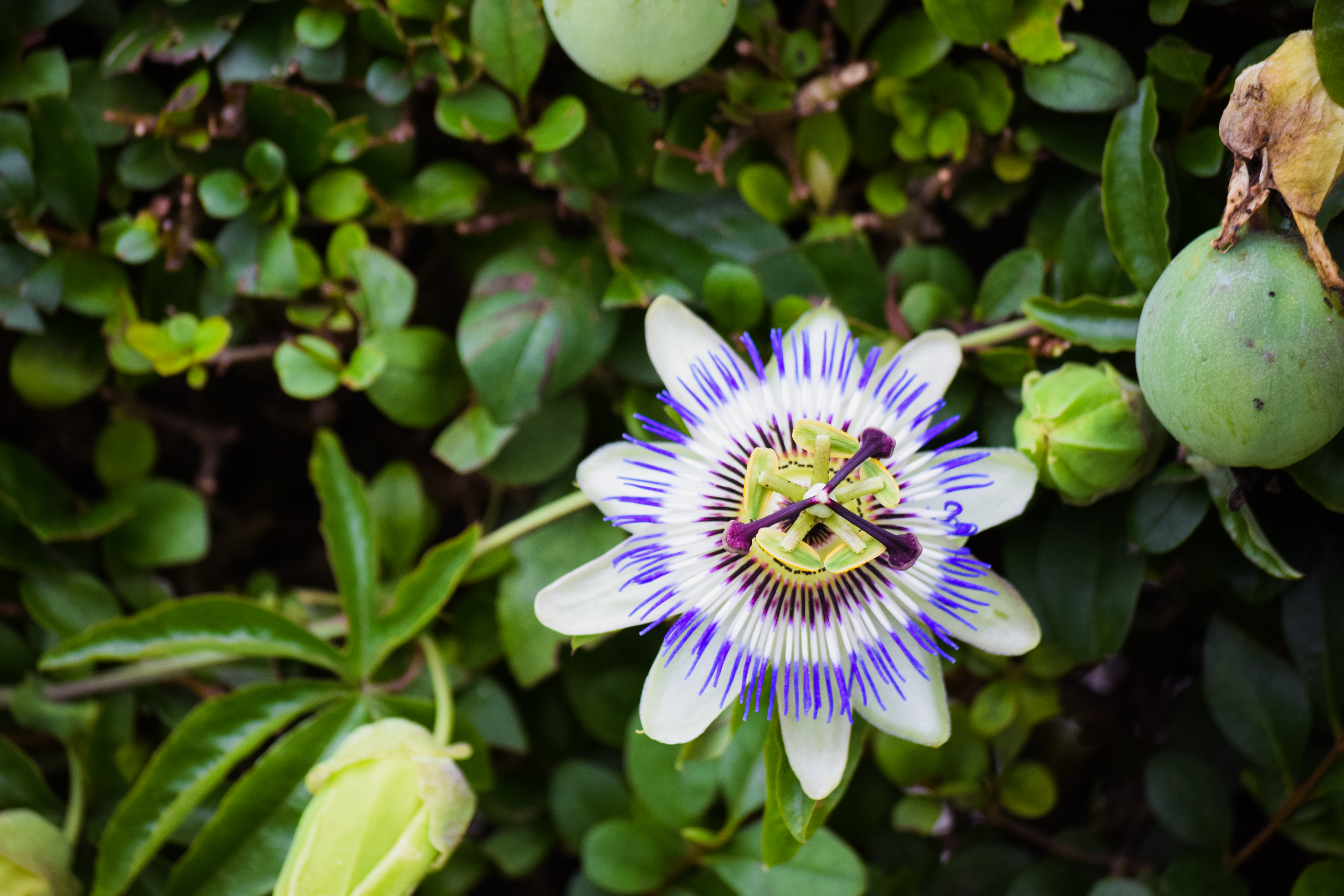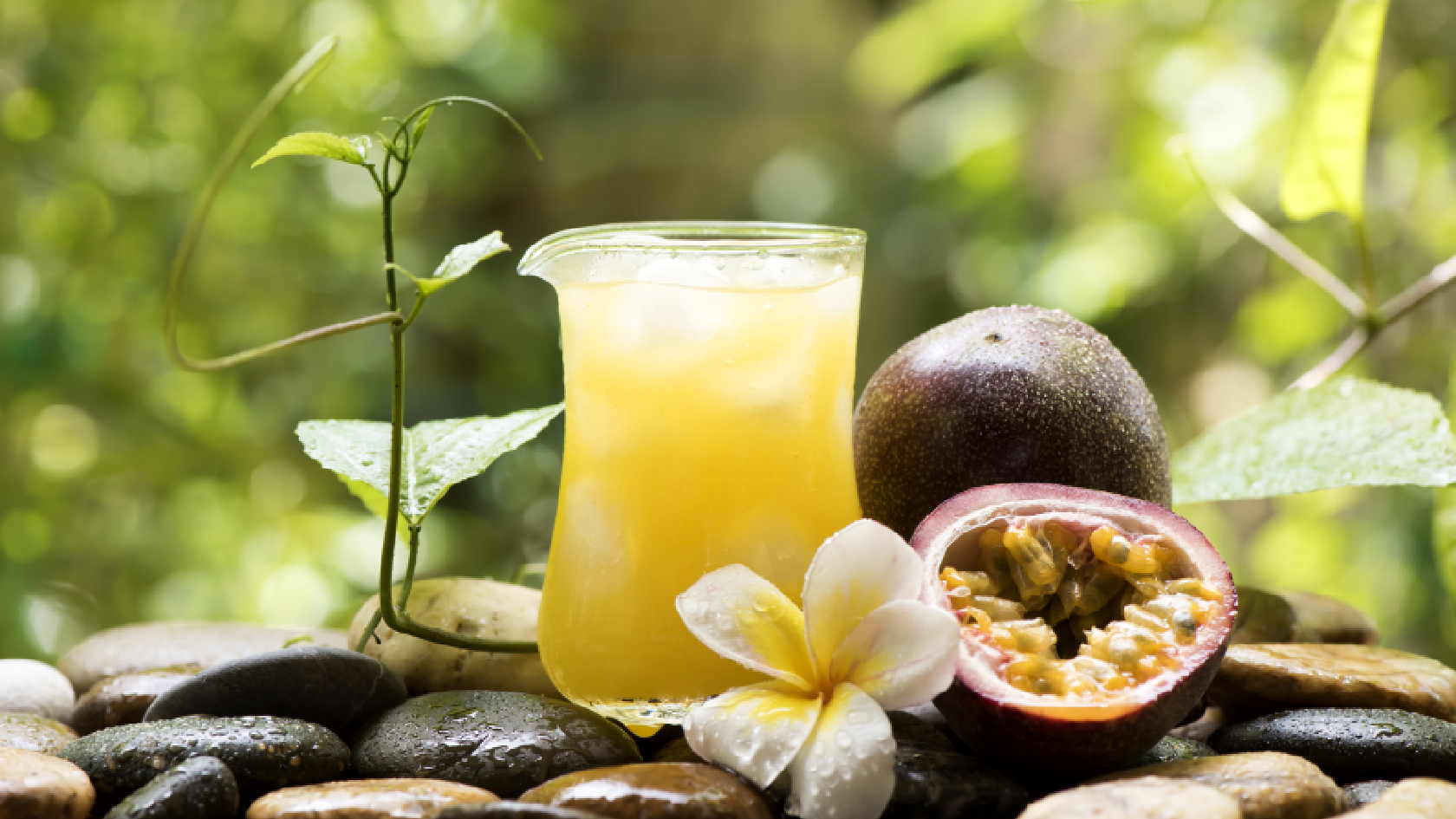- Know more about this plant species Passion fruit is the common name that missionaries gave to a group of plants from the Passifloraceae family founded in South America in the 1500s. They considered that various characteristics of their flowers had religious meaning relating to Jesus Christ´s death known as The Passion. Those are vigorous, woody, perennial climbing plants, with branches up to 20 meters long commonly forming vines. They have green, ribbed stems and axillary tendrils longer than the leaves that wind in a spiral shape. The vigour of passion fruit plants can be improved with the personalized fertilization program you can find in the i-Plant Nutrition.

Passiflora edulis
The most valuable part is in the sweet and sour pulp of its fruits. It is a globose berry which colour when ripe may vary according to the species between yellow, red and purple. Inside, the seeds are surrounded with a very aromatic fleshy aryl, measuring 6 to 7 cm in diameter and between 6 and 12 cm in length. This aryl contains an opaque yellow juice, very aromatic and with a pleasantly sweet and acid flavour. The three species predominantly cultivated are golden passion fruit or sweet granadilla (Passiflora ligularis), purple passion fruit (Passiflora edulis forma edulis) and yellow passion fruit (Passiflora edulis forma flavicarpa). However other varieties and hybrids are also grown from the Passifloaceae family.
Passiflora edulis
- Uses The passion fruits are supplied fresh to the human consume The pulp is a source of proteins, minerals, vitamins, carbohydrates and fat. It is consumed as fresh fruit, or in juice. It is used to prepare soft drinks, nectars, jams, ice cream, puddings, preserves, etc. The concentration of ascorbic acid in passion fruit varies from 17 to 35 mg / 100g of fruit for red passion fruit and between 10 and 14 mg / 100g of fruit for yellow passion fruit. The yellow-orange colour of the juice is due to the presence of a pigment called carotene, containing also a good amount of vitamin A and C, as well as mineral salts, such as calcium, iron and fibres. Every 100 ml of juice contains an average of 53 cal, varying according to the species.

Passiflora edulis
The 50-60 % of the fruit is a shell that is inedible fresh but can be used after converted in flour by industrial processing, as well as the 10-15 % of the fruit that corresponds to seeds. The oil extracted from its seeds could be used in the manufacture of soaps, inks and varnishes. - Edaphoclimatic requirements - Soil: Passion fruit has high adaptability to different soils as long as they are deep and fertile. However, these plants have a preference for loose and well-drained soils, since flooding facilitates the appearance of diseases. The best soils for this crop are sandy loam, with good moisture retention capacity and a pH between 5.5 and 7.0. If the soil is clayey, it should be ploughed and traced one month before transplanting, to favour the drainage and roots development. The texture and structure of the soil can influence the size and weight of the fruit. We recommend following the indications you can find at the i-Plant Nutrition, to obtain optimal productivity in each passion fruit plant.

- Climate conditions: It is helpful to take into account that these plants are originally from Brazil. Passion fruit has a wide adaptation interval, ranging from 0 to 1,300 meters altitude, with temperatures that vary between 24 ° and 28 °C. In regions with average temperatures above that range, vegetative development is accelerated, the flower production and the number of flower buds is reduced. The higher the temperatures, the sooner the harvest time will be reached, but the quality can be affected negatively by the taste and weight of the fruits. On the other hand, the low temperatures cause a reduction in the number of fruits. In addition, is important to consider solar radiation. The quality of the fruit is directly related to the light exposure of the leaf area of the plants. Fruits exposed to the sun decrease in weight but have a higher percentage of juice, a greater amount of ascorbic acid, a thinner rind, and soluble solids also increase with greater solar radiation. Five hours of light per day is recommended.
- Water: It is highly requested when fruits are approaching maturity. If soil is dry, fruits may shrivel and fall prematurely. Fortunately, regular watering will keep a vine flowering and fruiting almost continuously. - Fertilization Data obtained from yellow passion fruit crop experiments, determined that the nutrient required, in order of importance are N, K, Ca, S, P, Mg, Fe, B, Mn, Zn and Cu. It is important to consider the requirement of micronutrients such as Mn, Fe, B and Zn; since its deficiencies affect dramatically the quality of the fruit as well as the yields. It is estimated that in the first year of the production cycle, a crop to produce 20 tons of fruit per hectare extracts the following amounts of nutrients: Nitrogen 160 kg, Phosphorus 15 kg, Potassium 140 kg, Calcium 115 kg, Magnesium 10 kg, sulfur 20 kg, Boron 230 g, Copper 150 g, Iron 600 g, Manganese 220 g, Zinc 200 g. However, do not hesitate to use the i-Plant Nutrition to obtain personalized advice for your crop - Profitability In order to produce with the highest efficiency, 4,000 plants are enough to cover one hectare in optimal conditions. It can be obtained by sowing 500 g of seeds in rows 15 cm apart. The seeds need to be covered with a thin layer of soil to facilitate germination. The yields range between 15 and 50 tons/ha/year. The profitability is variable, but three-year crops range between 140-225 £/t reaching an average net profit of 1160 pounds per hectare.






